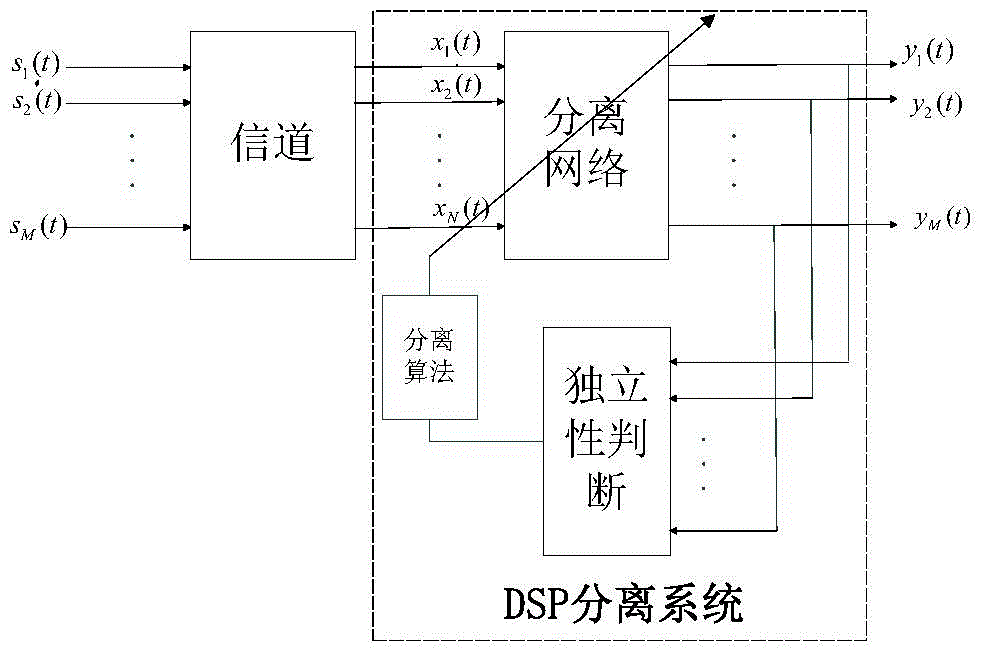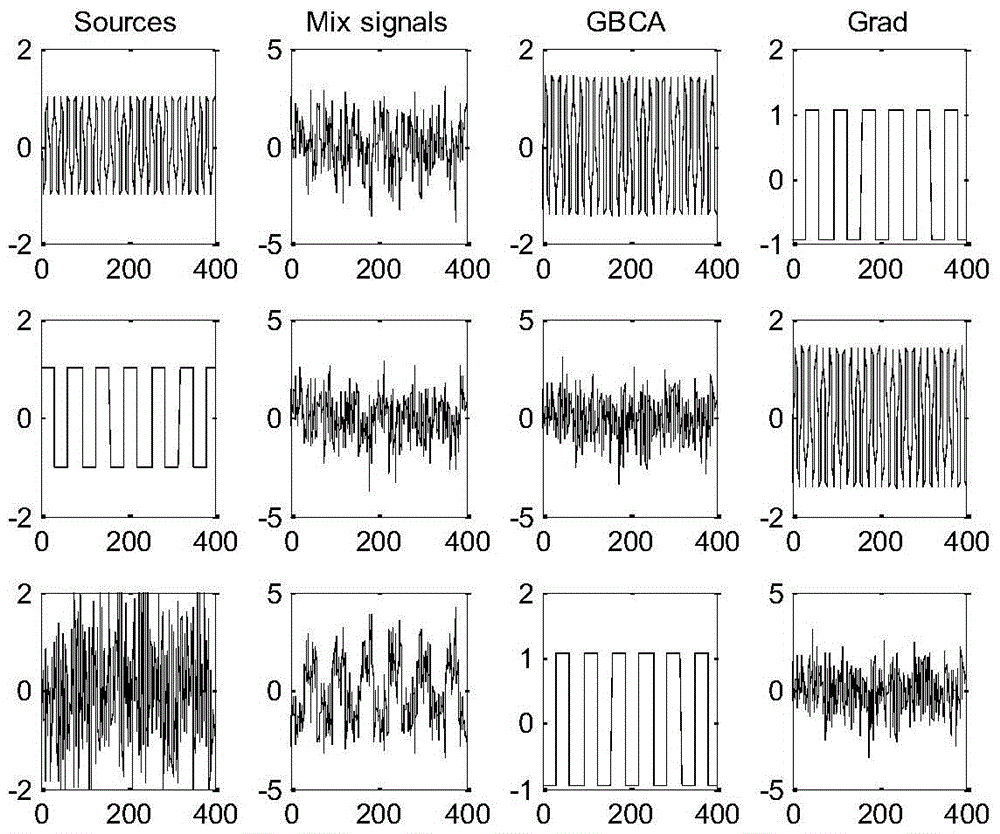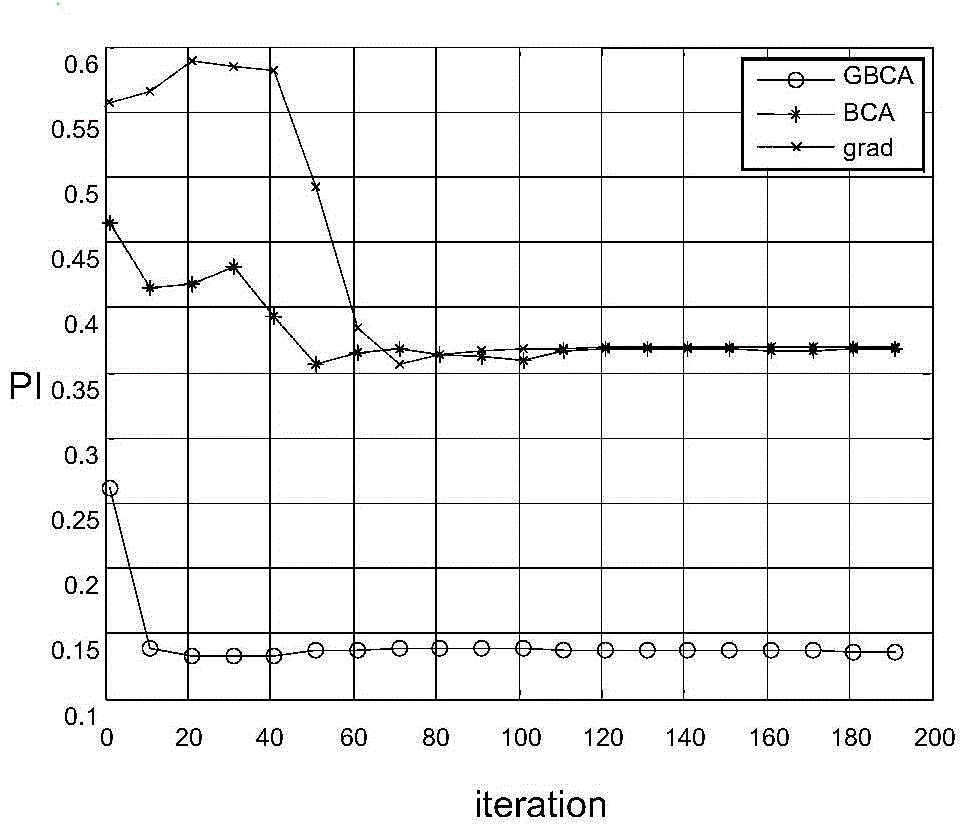A Method for Separating Mixed Signals in Time-Frequency Domain
A mixed-signal, time-frequency domain technology, applied in speech analysis, transmission monitoring, biological models, etc., can solve the problems of long time, slow convergence, and high setting requirements
- Summary
- Abstract
- Description
- Claims
- Application Information
AI Technical Summary
Problems solved by technology
Method used
Image
Examples
Embodiment Construction
[0068] figure 1 It is a system model of wireless channel statistical multiplexing, which is composed of source signal, channel, DSP separation system and output signal. At the same time, M independent source signals of the same frequency pass through the wireless channel, and N antennas receive the mixed signal. The mixed signal is separated by the DSP separation system to recover the source signal, and realize the simultaneous transmission of the signal at the same frequency. Among them, the DSP separation system is the most important part. It consists of separation network, independence judgment and separation algorithm. The separation system decides whether to use the separation algorithm through independence judgment. makes the output y i (t) are independent of each other, then output y at this time i (t) is a certain source signal s j (t) estimate. Assuming that the parameter in the separation network is the separation matrix W of M×N, the elements in the matrix W are...
PUM
 Login to View More
Login to View More Abstract
Description
Claims
Application Information
 Login to View More
Login to View More - R&D
- Intellectual Property
- Life Sciences
- Materials
- Tech Scout
- Unparalleled Data Quality
- Higher Quality Content
- 60% Fewer Hallucinations
Browse by: Latest US Patents, China's latest patents, Technical Efficacy Thesaurus, Application Domain, Technology Topic, Popular Technical Reports.
© 2025 PatSnap. All rights reserved.Legal|Privacy policy|Modern Slavery Act Transparency Statement|Sitemap|About US| Contact US: help@patsnap.com



